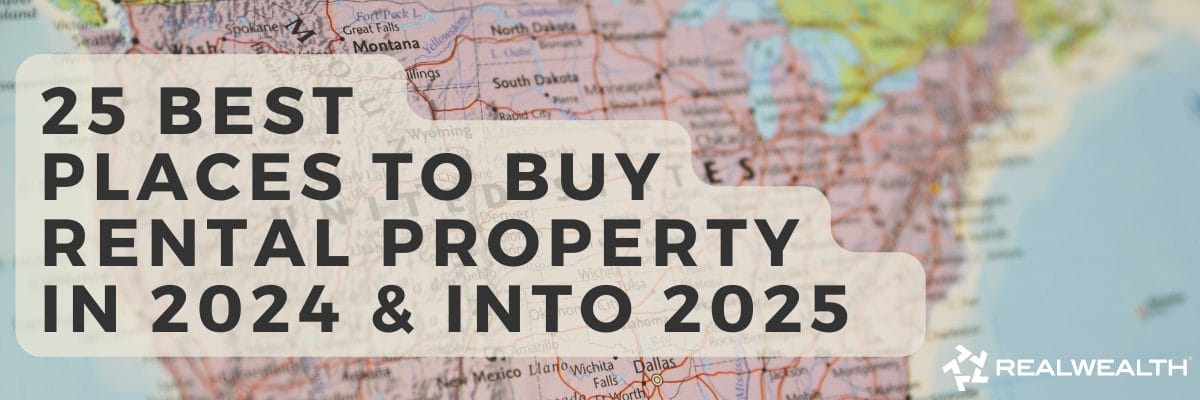At RealWealth we come across a lot of investors who don’t think much about doing a 1031 exchange until after they’ve sold their property and are in the 45 day crunch time window. While we can definitely still help people in this situation find quality replacement properties and boost their cash flow, it’s generally better to decide to do an exchange ahead of time. This can allow for proper planning and strategy. Below we will outline the typical 1031 exchange timeline that real estate investors should follow if they want to avoid paying capital gains tax.
A Typical 1031 Exchange Timeline
Please note that this can differ from person to person. This is by no means a one size fits all timeline.
Step 1: Decide you want to do a like-kind exchange
The first step on the typical 1031 exchange timeline is simple – decide you want to do a 1031 exchange. This is something to spend a bit of time pondering, because depending on your situation it may not make sense to do a 1031 exchange. Perhaps you really need or want the cash from your investment property and are okay paying capital gains tax. Maybe you simply don’t have the energy to learn all the rules or just don’t want to deal with the hassle.
However, for many investors I’ve worked with over the years, the juice is definitely worth the squeeze. I mean, imagine being able to double or even triple your monthly cash flow by selling one high priced property in a bubble market for several cash flowing properties in more affordable markets around the country — areas like Charlotte, Atlanta or Tampa.
long term investing
If this sounds like your situation, doing a 1031 exchange is definitely advantageous enough to warrant a discussion with your accountant.
Step 2: Put your property on the market.
You can put your property up for sale as usual, but make sure to talk to your agent about adding 1031 exchange lingo into the listing paperwork. Whoever buys your property will need to be willing to work on your timeline.
Step 3: Find a Qualified Intermediary
When looking for a Qualified Intermediary it’s important to look for someone who has experience doing the type of exchange you’d like to do (ie: if you’re doing a reverse exchange, find a QI who knows this process backwards and forwards). Ideally, your QI has performed thousands of successful exchanges and has lots of positive client reviews.
Here are a few ideas for how to find a great QI:
- Get a Referral – ask an escrow officer, friends, or family.
- Research Online
Check out client reviews on third-party sites - Become a member of RealWealth® to get access to a list of Qualified Intermediaries frequently used by our members.
Step 4: Look for replacement properties
As I mentioned above, it’s better to have a strategy for finding replacement properties in place before you sell your property. Because as soon as you sell the 45-day countdown begins. And this is not a lot of time to find high-quality properties that can cash flow. It’s definitely possible, but it’s more difficult.
Sorry to include another self promotion here, but finding cash flowing replacement properties is one of the things we specialize in at RealWealth. Click the Join for Free button above to become a member to schedule a complimentary 1031 strategy session with me or one of my colleagues.
Step 5: Negotiate & close on the sale of your relinquished property
It’s really important that the person who is buying your property knows you are doing a 1031 exchange. Make sure all the paperwork clearly states this, because the buyer will need to comply with certain rules. Ask your agent or QI about this!
Work with your qualified intermediary, title company and attorney to handle the closing. Once the property has been officially relinquished the funds from the transaction will be transferred into your Qualified Intermediary’s bank account for safekeeping.
Step 6: Identify your replacement properties within 45 days
You’ve closed and the funds have been transferred into your QI’s bank account. Congrats! Now it’s time to identify your replacement properties. You can identify up to three properties OR more than three properties if:
You close on 95% of them, OR the total value of all identified properties is less than 200% of the sales price of the property you relinquished.
Step 7: Choose your first-choice property and sign the contract
For most investors, one of the properties they identify stands out as their first choice. It’s important to get that property under contract and open escrow as soon as possible. Also, make sure that the seller knows about your 1031 exchange.
You can also go under contract with your second, third and fourth choice properties. Just make sure to include contingency clauses so you can back out later if you’re able to snag your first choice.
Note: It is possible to purchase more than 1 replacement property when doing a 1031 exchange. We see a lot when people are selling $1 million+ properties in areas like the Bay Area or Manhattan for properties in more affordable markets like Baltimore or Detroit. I’m working on another article about this soon. It should be up at the beginning of January, so I’ll make sure to post a link to it here.
Step 8: Close on your replacement property.
The final step of the 1031 exchange timeline is to close on your replacement property. When all is said and done, your QI will send your money to the title company or attorney and your property close. This will allow you to defer paying capital gains tax until some point in the future when you choose to sell. If you ever choose to sell, which we hope you don’t. In an ideal world, you can avoid paying capital gains forever by continuing to exchange your replacement properties for new properties.



